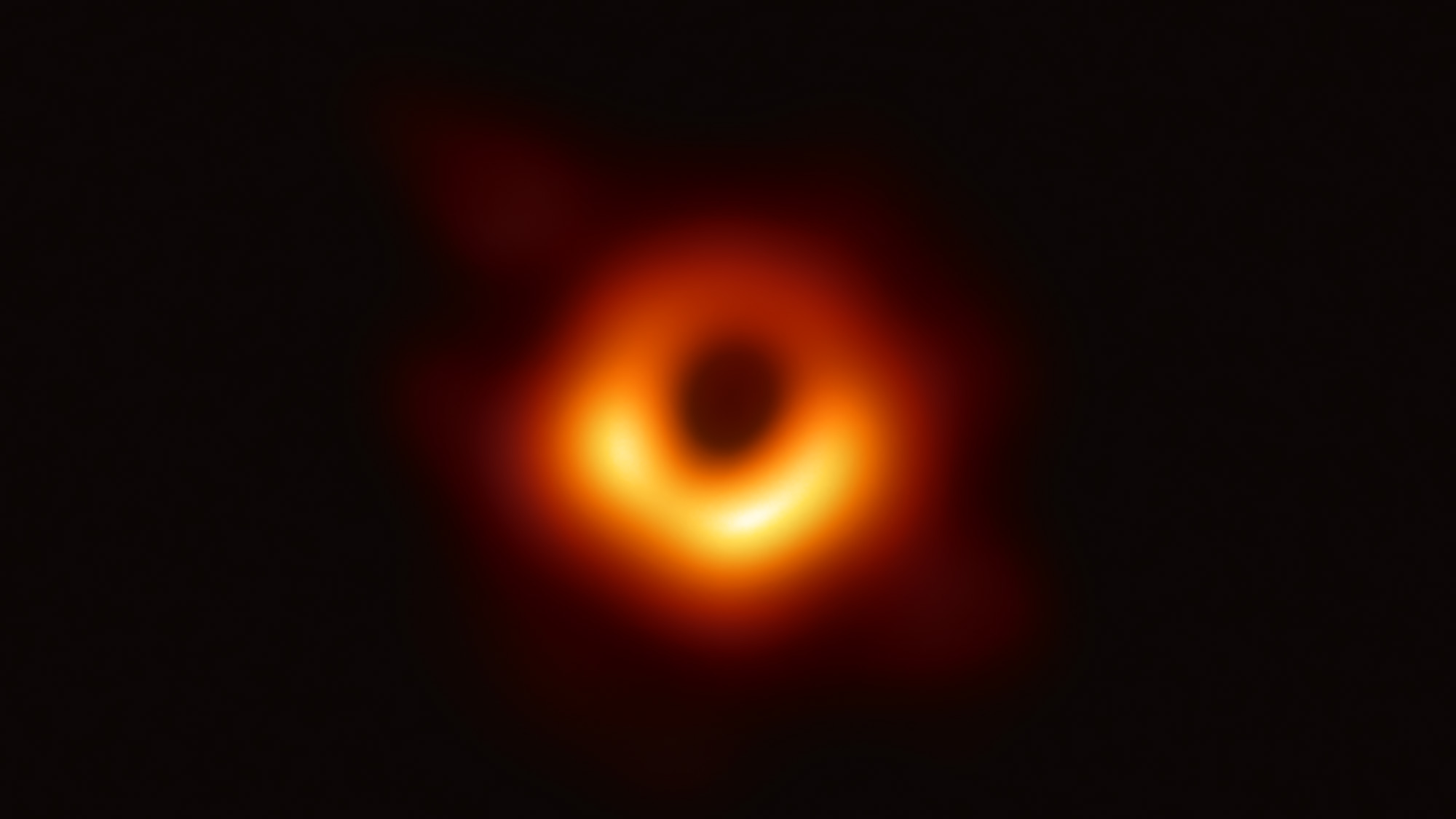Event Horizon Telescope Team Wins $3 Million Breakthrough Prize for Epic Black Hole Imagery

The scientists who captured the first-ever images of a black hole just got handsomely rewarded for their epic achievement.
The Event Horizon Telescope (EHT) team, which earlier this year unveiled photos of the supermassive black hole at the heart of the galaxy M87, won the $3 million annual Breakthrough Prize in fundamental physics, Breakthrough Prize representatives announced today (Sept. 5).
"It's an amazing achievement for us, and to be recognized in this way brings it all home in a certain way — how it affects others," said EHT Director Sheperd Doeleman, who's based at Harvard University and the Harvard-Smithsonian Center for Astrophysics.
Video: This Is Our 1st Real Photo of a Black Hole
Related: Historic First Images of a Black Hole Show Einstein Was Right (Again)
The EHT project, which has been in the works for two decades, links up eight radio telescopes in Arizona, Spain, Mexico, Antarctica and other places around the world to form a virtual instrument the size of Earth. Doeleman and his colleagues have been using this megascope to peer at two supermassive black holes: the M87 behemoth, which harbors about 6.5 billion times more mass than Earth's sun, and the supermassive black hole at the heart of our own Milky Way galaxy. This latter object, known as Sagittarius A*, is a runt by comparison to M87, weighing in at just 4.3 million solar masses.
Sagittarius A* is about 26,000 light-years from Earth, by the way, and the M87 black hole lies a whopping 53.5 million light-years away from us.
The goal is to map these two black holes' contours by imaging each one's event horizon, the famed "point of no return" beyond which nothing, not even light, can escape. (It's impossible to photograph a black hole's interior, unless you're in there yourself.)
Breaking space news, the latest updates on rocket launches, skywatching events and more!
On April 10, the EHT Collaboration announced that it had succeeded in photographing M87's black hole, revealing the accomplishment in a series of press conferences and six papers published in scientific journals.
The EHT imagery has opened an entirely new field of inquiry, allowing researchers to probe exotic realms that had previously been out of reach. And the photos captivated laypersons as well; the images led newscasts around the world and appeared, above the fold, on the front page of virtually every major newspaper.
This project has "resonated beyond the sciences because it was aspirational," Doeleman told Space.com.
"We set our sights high, and we took on the biggest questions that we could think of to ask: What is the nature of a black hole? How does it work?" he added. "And then we said, 'Can we image it to answer these questions?' And we just didn't take no for an answer."
Doeleman and his team are far from finished. They're still working to image Sagittarius A*, for example, which would give scientists looks at a very different type of supermassive black hole.
The collaboration also plans to incorporate more radio dishes into the EHT network in the near future, thereby improving the megascope's vision. With about 20 component scopes, Doeleman said, the EHT should be able to capture movies of supermassive black holes, which would yield much more insight into these objects' behavior over time.
These new additions will be ground-based instruments in the near term. But the researchers would love for the network to have some space-based antennas eventually as well. Off-Earth elements would dramatically increase the EHT's power and potential, team members have said.
"We've seen just the beginning," Doeleman said.
He will share the $3 million Breakthrough Prize equally with the 346 other EHT team members whose names appear on one or more of the six papers published on April 10. The scientists will be honored on Nov. 3 at the 2020 Breakthrough Prize ceremony at NASA's Ames Research Center in Silicon Valley.
The ceremony will also honor winners of the annual $3 million Breakthrough Prize in life sciences (four awards this year) and mathematics (one award), as well as the recipients of a $3 million Special Breakthrough Prize in fundamental physics.
This latter award goes to Sergio Ferrara, Daniel Freedman and Peter van Nieuwenhuizen for their development of the highly influential theory of supergravity.
The Breakthrough Prize in science and math was founded in 2012 by Mark Zuckerberg and Priscilla Chan, Sergey Brin, Anne Wojcicki, and Yuri and Julia Milner. The $3 million awards are the richest in science. For comparison, each 2018 Nobel Prize is worth 9 million Swedish kronor, about $1 million at current exchange rates.
The Breakthrough Prize also recognizes early career researchers with $100,000 "New Horizons" awards. Six such awards were earned this year, three each in physics and mathematics. You can read about all of this year's awardees here: https://breakthroughprize.org/News/54
- The Future of Black Hole Photography: What's Next for the Event Horizon Telescope
- Images: Black Holes of the Universe
- What Exactly Is a Black Hole Event Horizon (and What Happens There)?
Mike Wall's book about the search for alien life, "Out There" (Grand Central Publishing, 2018; illustrated by Karl Tate), is out now. Follow him on Twitter @michaeldwall. Follow us on Twitter @Spacedotcom or Facebook.

Michael Wall is a Senior Space Writer with Space.com and joined the team in 2010. He primarily covers exoplanets, spaceflight and military space, but has been known to dabble in the space art beat. His book about the search for alien life, "Out There," was published on Nov. 13, 2018. Before becoming a science writer, Michael worked as a herpetologist and wildlife biologist. He has a Ph.D. in evolutionary biology from the University of Sydney, Australia, a bachelor's degree from the University of Arizona, and a graduate certificate in science writing from the University of California, Santa Cruz. To find out what his latest project is, you can follow Michael on Twitter.
